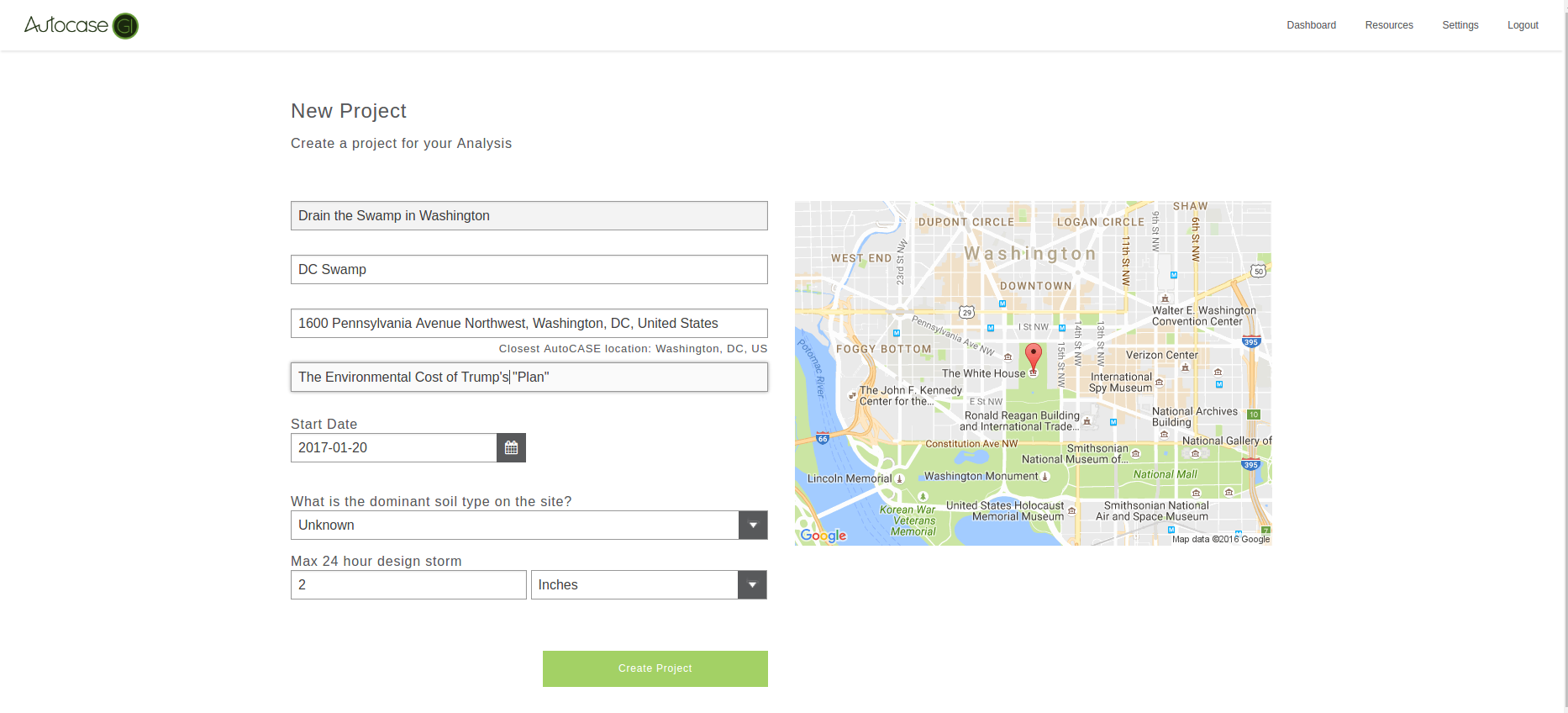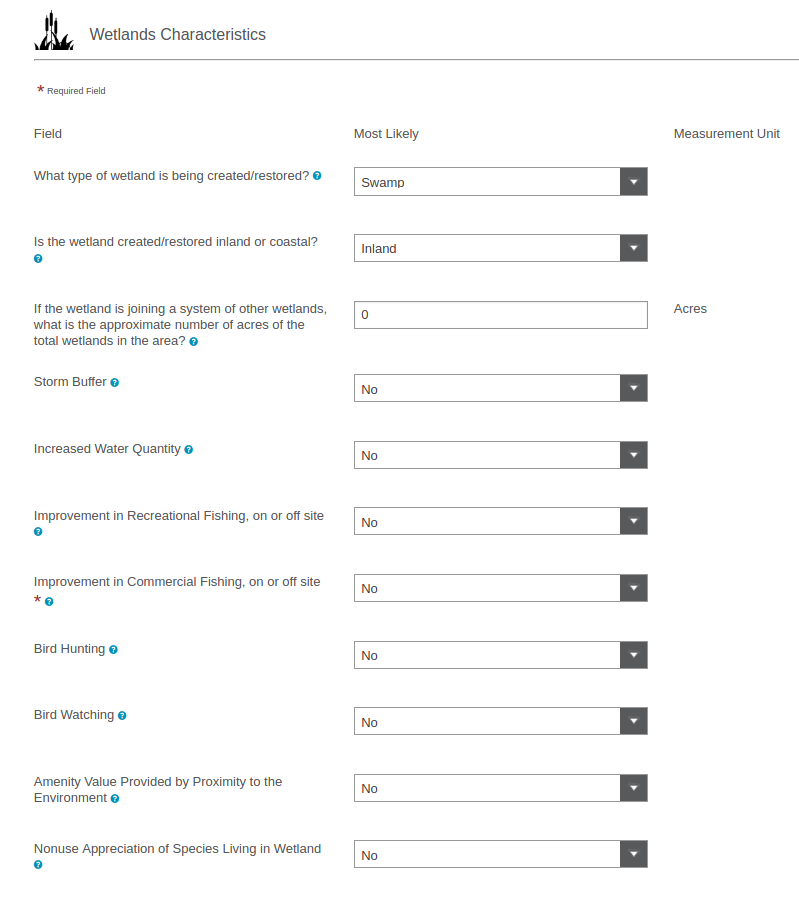
Mr. Trump has promised to drain the Washington swamp. We ran this through Autocase for Green Infrastructure to see what the value is of this “strategy”. We centered the project at 1600 Pennsylvania Avenue (although we considered running it from Trump’s hotel at 1100 Pennsylvania Ave). But, using the White House as the project site, we find an interesting result that the Trump International Hotel may be the biggest beneficiary from the existing swamp. We encourage Mr. Trump to sign up now, before he becomes President for Autocase for Green Infrastructure (and Autocase for Buildings if he wants to get an extra LEED credit for making his residence(s) more sustainable), because both Autocase products are in beta and available for free until the end of this year.

The project was set to run for 4 years starting on January 20th 2017. We assumed a 100-day (de-) construction period. We left the planning period at zero since Mr. Trump does not seem to be big on planning and preparation.

Since we don’t usually drain swamps in Autocase for Green Infrastructure we created a “Save Our Swamp” design that values an existing 1-acre swamp in D.C. to see what we’d lose from draining it. The detailed Autocase report can be found here. Autocase allows for four types of wetlands but we chose swamp over prairie pothole, freshwater, or saltwater marsh. For simplicity we did not ascribe any other uses for the swamp.

Green infrastructure such as a swamp has many benefits; stormwater is naturally cleaned of pollutants, flooding is reduced, air pollution and carbon emissions are reduced, urban heat island effects are reduced, and property values are enhanced. This Autocase for Green Infrastructure analysis has been run for the project titled “DC Swamp” and its design alternative called “Save Our Swamp!”. This analysis is an absolute analysis, meaning that the values are representing the total value of the project or features to the project owner, society, and environment. Autocase for Green infrastructure has analyzed the wetland (swamp) features of the site. The feature creates positive social and environmental value on the project’s site, for the city of Washington, District of Columbia and also on a national or global scale (although the new administration may want to discount climate change benefits outside of the US).
In Autocase for Green Infrastructure, the value of a project is summarized in terms of Financial or Sustainable Net Present Value, or NPV. The Financial NPV only includes costs and benefits that involve cash flows to the government. Since this is an existing swamp there are no capital expenditures or operations and maintenance (O&M) costs but there are avoided costs (without the swamp you need additional piping and detention to handle the stormwater run-off so Autocase for Green Infrastructure has calculated the capital expenditures and O&M costs for these items).
The Sustainable NPV, on the other hand, includes not only financial cash flows but also the monetized value of all of the project’s social and environmental net benefits to society as a whole. In this case these, to be conservative water quality benefits were not included. Other benefits include changes in carbon emissions
(Autocase allows setting the social cost of carbon to zero, or any other value, if Mr. Trump so wishes), air quality, flood risk and urban heat island reduction and a property value uplift.

In the case of keeping the swamp, the total Sustainable Net Present Value (or S-NPV) is $137,706. This means that this design alternative has a positive total value when summing together the Financial, Social, and Environmental costs and benefits. As this is an absolute analysis, this means that the saving the swamp project has an overall net positive value to society. Looking at a breakdown of the value in this project, the total value of benefits is $167,056, while the total value of extra financial costs is -$31,021. The largest benefit is Property Value, constituting 45% of all benefits in this project, while CapEx on Additional Detention is the largest cost, making up 52% of all costs. Here are the details on the property value uplift associated with the Washington swamp. Draining the swamp would eliminate this value.

It seems as if the Trump International Hotel Washington, D.C. could be the biggest beneficiary from not draining the swamp.
Overall, this saving the swamp result is reduced government outlays on piping and detention and it has a positive social and environmental value and brings overall benefits to the surrounding region including Mr. Trump’s hotel. We think President-elect Trump should re-consider.
0 Comments